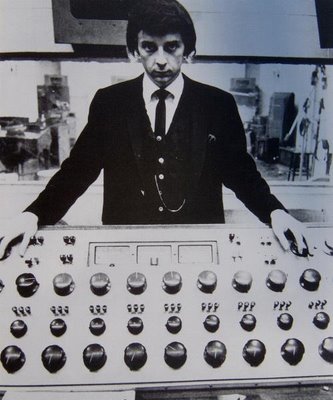Rock and roll has no morals. Of course, that’s much of what is and has always been attractive about it. But maybe there’s something legitimately chilling beyond where lawlessness and rebellion are sexy. Maybe parents who threw puritanical fits over Elvis had the right idea. Maybe there is something that encourages our worst, most violently childish impulses, in this music, and in the permissions, longings, and scenes it generates. Vikram Jayanti’s documentary The Agony and the Ecstasy of Phil Spector (currently showing at Film Forum through July 13th) is a profoundly uncomfortable experience, and it’s all the more uncomfortable for how entertaining it is. These linked qualities drive home a point about rock and roll and the people who gain access to its strange, coveted world.
The concept of art—serious art, high art—is on display front and center here. Spector compares himself to Da Vinci, Michaelangelo and Beethoven (the last regarding his hairdo), among many others. The title of the film is a reference to Michaelangelo and functions on the most obvious level, like much of the rest of the movie, as satire. It’s satire by way of hyperbole; the juxtaposition of “The Agony and the Ecstasy” and “of Phil Spector” itself produces confused laughter.
But the satire isn’t simple mockery. It’s uncomfortable, it’s not exactly a place one wants to go. Neither Spector nor his murder trial really should be the object of mockery. Both are too creepy, too serious, to be played for laughs. Jayanti uses footage from Spector’s 2007 murder trial, but scores that footage with Spector’s best known music, and then cuts the trial footage as though it were a music video. This is an obvious recipe for satire, making the dreamy pop music talk against the dry court televsion. However, the device has deeper consequences than that. At times the songs comment obviously on the subject they’re scoring (“He Hit Me (and It Felt Like a Kiss),” for instance, underscoring Spector’s former girlfriends’ testimonies about physical abuse), and at times the relationship between music and image is less blatantly connected. The effect is funny and jarring, but also creepy and guilty. We get the sense that maybe we should be taking this subject more seriously than we are, and the lush, catchy, addictive music itself seems implicated in our inability to do so.
The film’s spine is a long, tell-all, no-holds-barred interview conducted by the director during Spector’s initial murder trial in 2007. Spector is full of confidence, hubris, and resentment. His favorite subject is his own importance. He relates multiple times how John Lennon said “Spector kept rock ‘n’ roll alive for the two years Elvis was in the Army.” He returns again and again to associations with musical luminaries and old grudges against various cultural icons. It all seems an aggressive declaration that he’s fine, he’s doing well—not crazy, not depressed, not guilty—and he’s as relevant a figure as the many other rock ‘n’ roll greats he jealously names.
But at the same time the camera focuses relentlessly on Spector’s physical afflictions—his hands shake uncontrollably, one eye waters and wells up red—and these give an obvious lie to the subject’s insistence on his own stability. Jayanti utilizes extreme, unloving close-ups far too frequently for the audience’s comfort. We don’t really want to get that close to Spector, his grandiosity, self-deceptions, and moral lack, but Jayanti forces us to go there and stay there. It’s like witnessing a car accident or watching a stranger cry on the subway. The fascination brings with it a skin-crawling sense of complicity.
The film also serves as an opportunity for the viewer to be struck by Spector’s very real musical achievement. Jayanti lets many of the songs play with little interruption, some in their entire original performance footage, from beginning to end. It is difficult not to get swept up in the musical brilliance. The acknowledgement of Spector’s legitimate genius juxtaposed with the text of his interview and trial contributes to the same sense of chilling complicity. Spector wants those listening to him to believe that an artist’s work should give him a free pass to be forgiven and loved no matter the contents of his personal life. Appreciating his music therefore makes the viewer feel all too close to allowing him that forgiveness. It’s a neat trick that leaves one profoundly unsettled by the time the film ends.
Documentary, like many art forms based on reality, on actual events, footage or objects, is most powerful when it becomes not merely depiction but commentary, framing the snapshot so as to give it meaning. The Agony and the Ecstasy of Phil Spector is a skillfully disturbing work of framing and juxtaposition.
